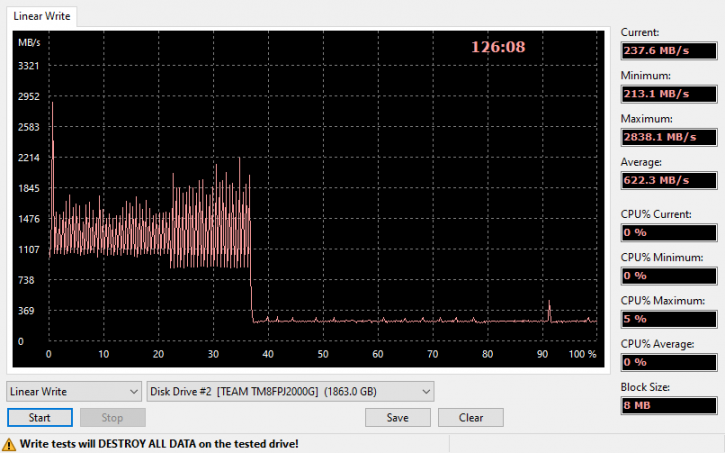SSD Performance Linear & Sustained analysis
SSD Performance Linear Read and Write performance analysis
In this chapter of the review, we will completely fill the SSD with data and observe what happens to the write performance as a result of doing so. So, for example, if the SSD has a capacity of 2TB, we'll read and then write continually. So we can see how the SSD would react when subjected to large amounts of read and write activities at the same time. As a solution to the sluggish read/write performance of TLC SSDs, manufacturers have added an SLC cache, sometimes known as a pSLC cache, into their products (pseudo). The amount of space available is determined by the capacity of the SSD. If there is still some free SLC cache space available, the SSD's read/write performance is comparable to that of SLC NAND, as long as the space has not been totally utilized. When the SLC cache is completely depleted, the firmware (FW) initiates background garbage collection in order to clear off the remaining space. Additionally, while garbage collection is taking place, data is still being sent to the drive, which has an adverse effect on its overall performance. With this test, we can examine what happens when the cache fills up and the write speed falls back to the lowest feasible value.
We can observe that read performance is a constant, we average out at 2073 MB/sec throughout reading the entire disk capacity, impressive.
Writing tests that are linear then. We write the entire 2 terabytes of SSD capacity here. And on any MLC/TLC/QLC NAND storage device, the infamous Achilles heel kicks in: once the pSLC buffer is depleted, you're back to bare TLC or QLC write performance.
Although the first few Gigabytes exceed 2950 MB/sec, this is a very small window of opportunity. We can write approximately 1250 MB/sec constantly when the drive is filled up to 36% (740 GB). However, after that figure is reached, the drive slows to 200~250 MB/sec.
Sustained Write performance
Sustained speed is defined as continuous operation at that speed for a full predefined set of files. In this case we'll copy two 115 GB files to see if we run into QLC/TLC write holes.
In this case, we transmit 230 GB of data between two MKV files. With a Windows file copy, you can observe that this NAND storage device is well capable of dealing with the situation.




